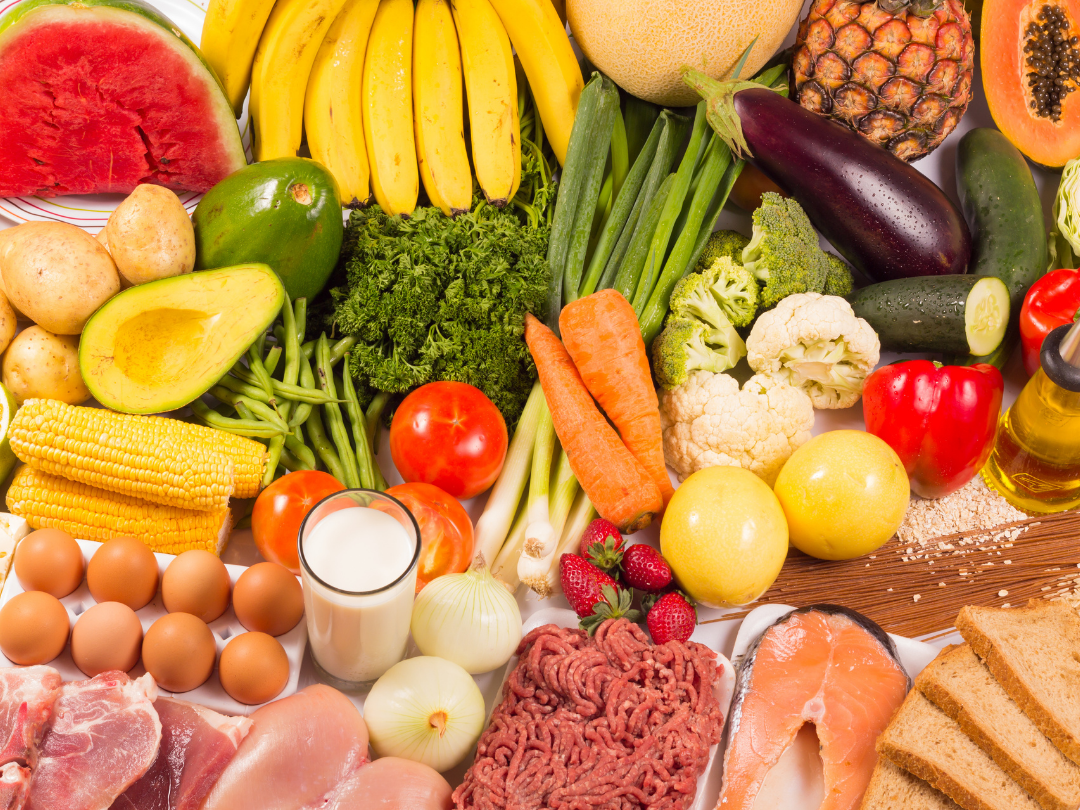
What is a balanced meal for my baby?
What does a balanced meal look like?
When we start introducing solids it’s more about the experience, experimenting and setting taste preference rather than the nutrients. Babies do need some foods rich in zinc and iron in these early days but overall you don’t need to be too worried about the balance as most of the nutrients are coming from breast or formula milk at this stage. After around 12 months the focus is on food for nutrients and so we want to make sure that we’re offering a good variety to meet those needs.
You might have seen the Government’s Eatwell Plate – well I like to use a slightly different version. It’s really simple – look at the plate, split it into 4 and fill each of the four sections with leafy greens and salad, other vegetables, root veg & wholegrains and finally protein. In addition to this is 1-3 portions of fruit. Now this is very much a guide and you’ll see how the focus is well and truly on vegetables above everything else!
Some other things to think about:
Oily fish – offer twice a week to get the recommended amount of omega 3 fats. Nuts, seeds and avocados can also give omega 3 fats but oily fish are still the best source!
Vary the protein – don’t just go for meat. Add in fish, seafood, eggs, pulses and tofu.
Drinks – we only need to offer children water to drink. Other drinks fill them up with empty calories, disrupt blood sugar balance or provide artificial sweeteners which are best avoided.
Choose wholegrains – these give a slower release of energy as the complex carbohydrates are broken down into sugar in the body and they provide fibre which is needed for healthy gut bacteria!
Dairy – dairy is an easy source of calcium for children but there are plenty of non-dairy sources so don’t rely too heavily on it. Children age 1-3 years need 350mg per day. One plain full fat yogurt and a cup of milk will reach that.
Supplements – vitamin A, C & D are needed for all children under 5 years of age. And vitamin D is required for everyone in the UK during the winter months.
Avoid – ultra processed foods as these are generally high in sugar, salt and additives. So that generally mean foods that use additives, ingredients and techniques that are rarely used in home-cooking.
Fruit – Aim for at least 5 portions of vegetables per days and 2 of fruit. It’s easy to lean into fruit rather than veg but try to tilt the balance towards vegetables where you can!
Having said all of this we have to be realistic and remember that feeding children is rarely easy or problem free. Our job as parents is to make these foods available, not make our children eat them! Exposure and habits are what’s important here. You also want to look at food intake over the course of a week rather than on individual days.
We know this can all feel a bit overwhelming when you first start to think about it, but we’d love to help. Join our free Facebook group Food for Fertility, Bump and Beyond.
By Nicola, I Love Greens
